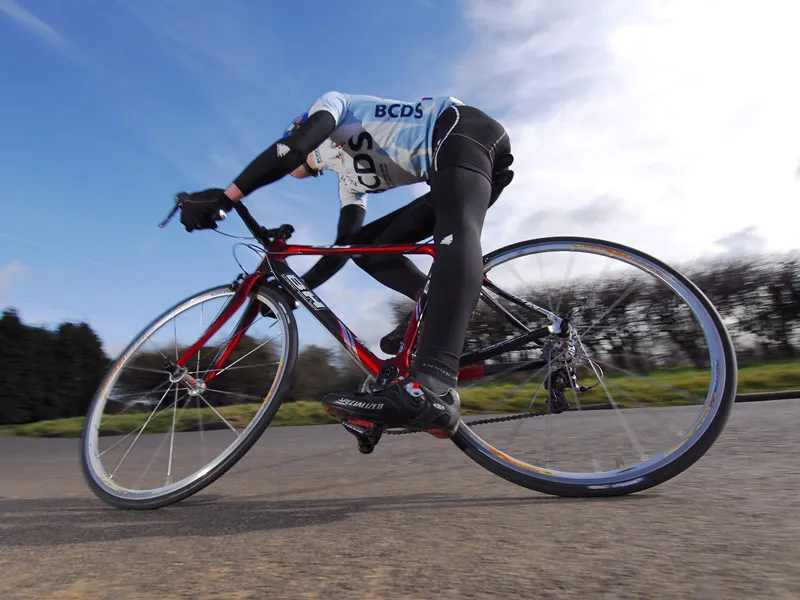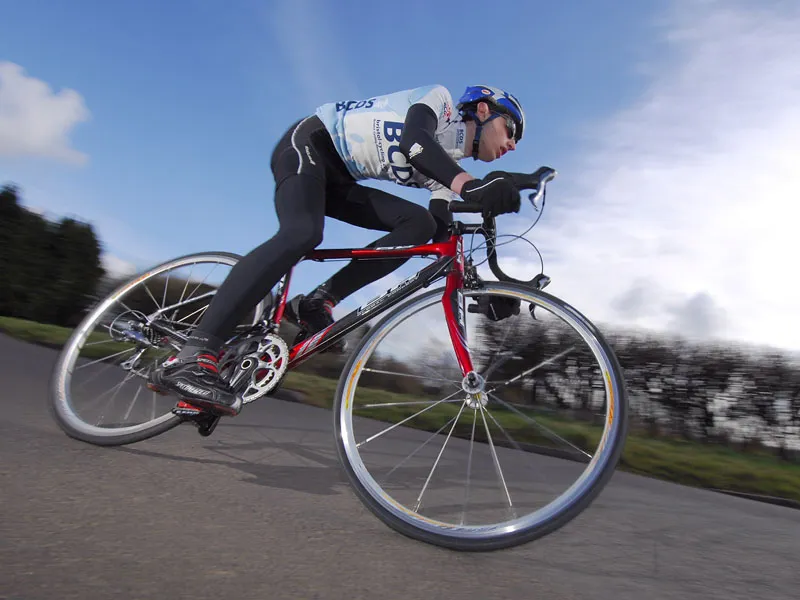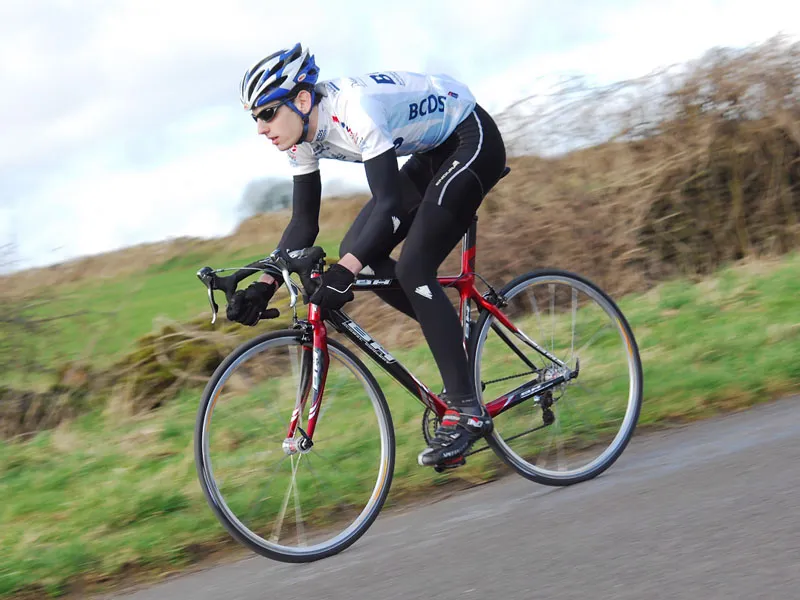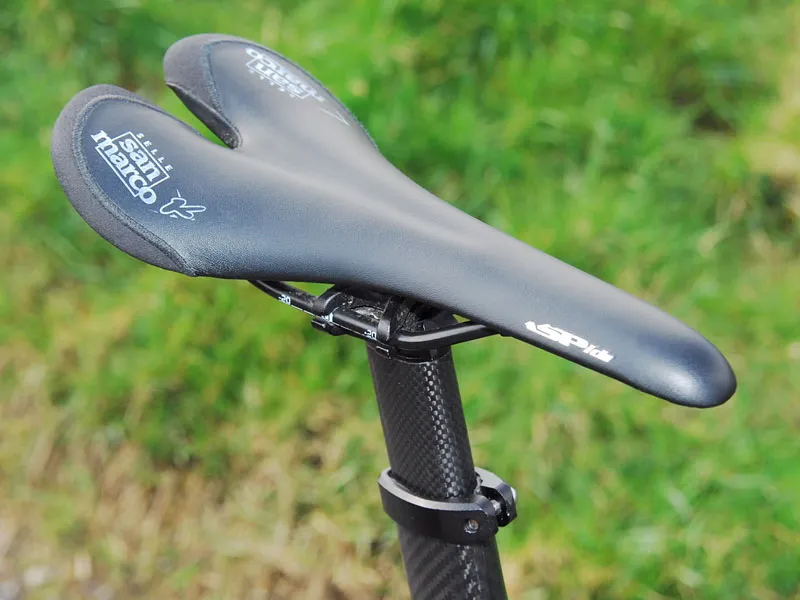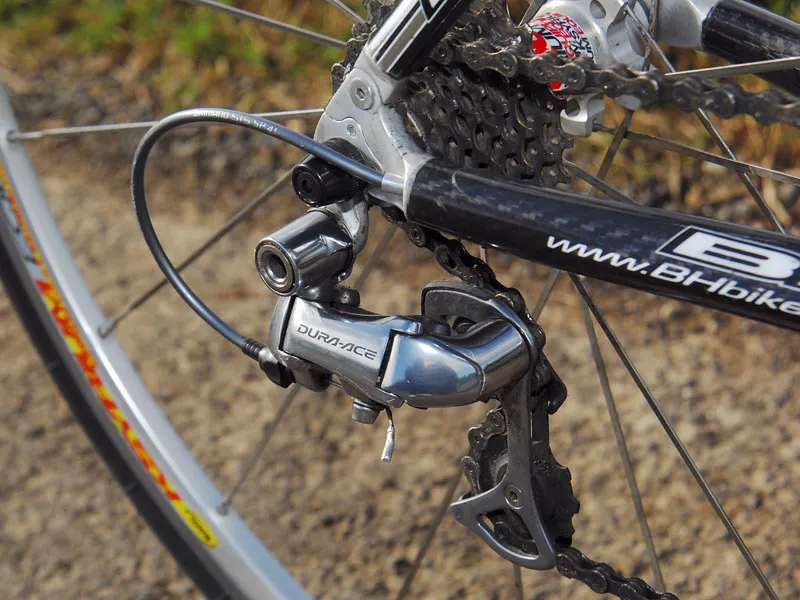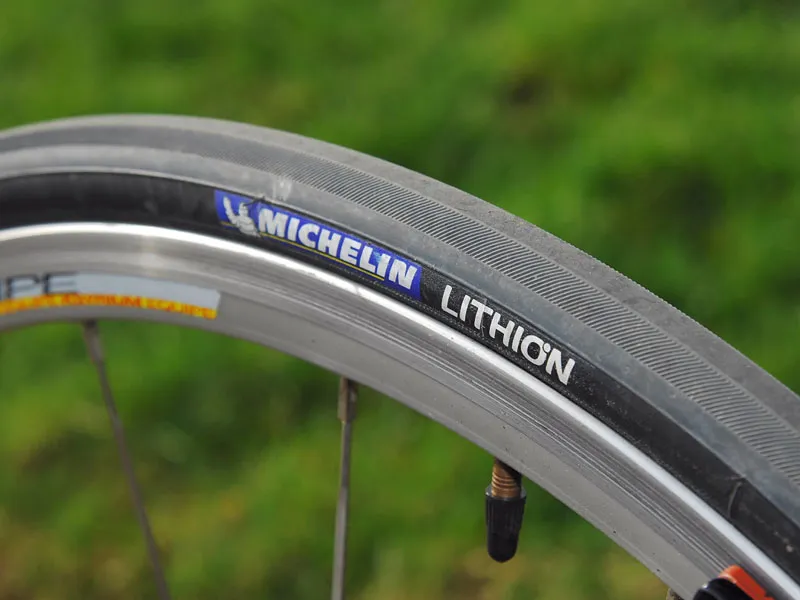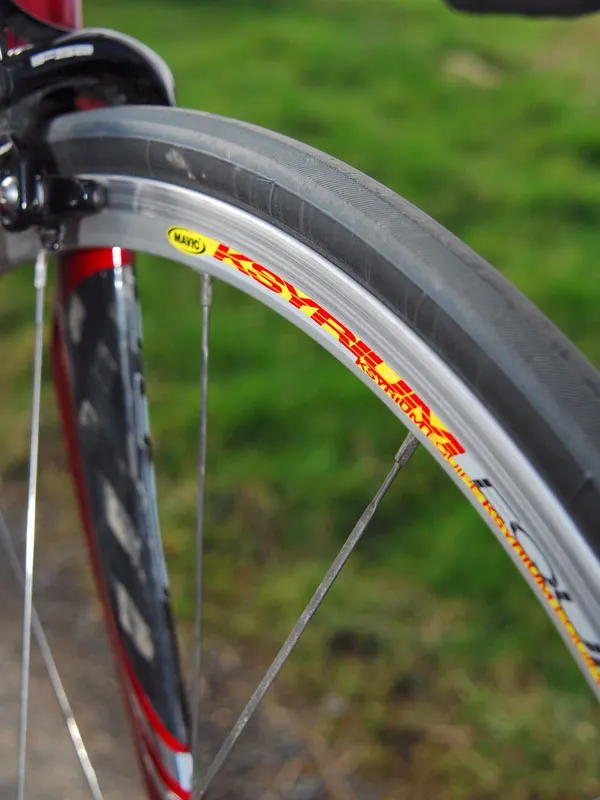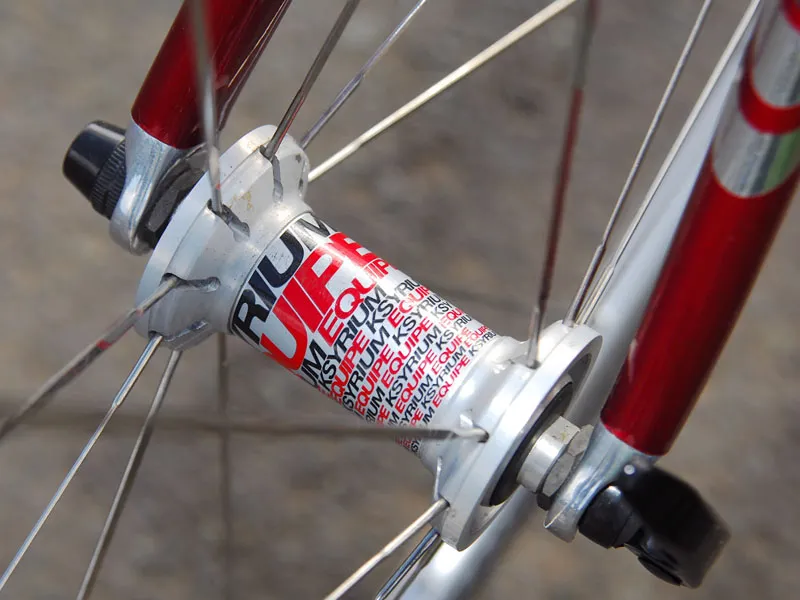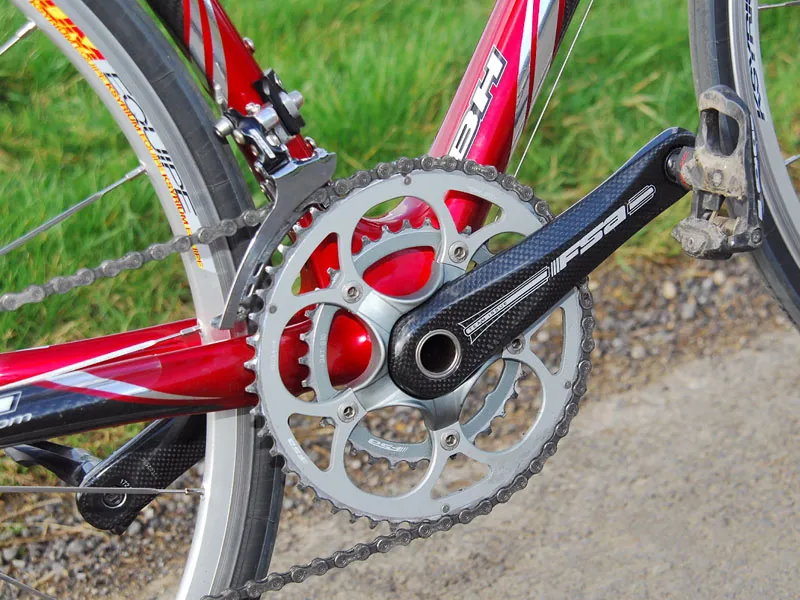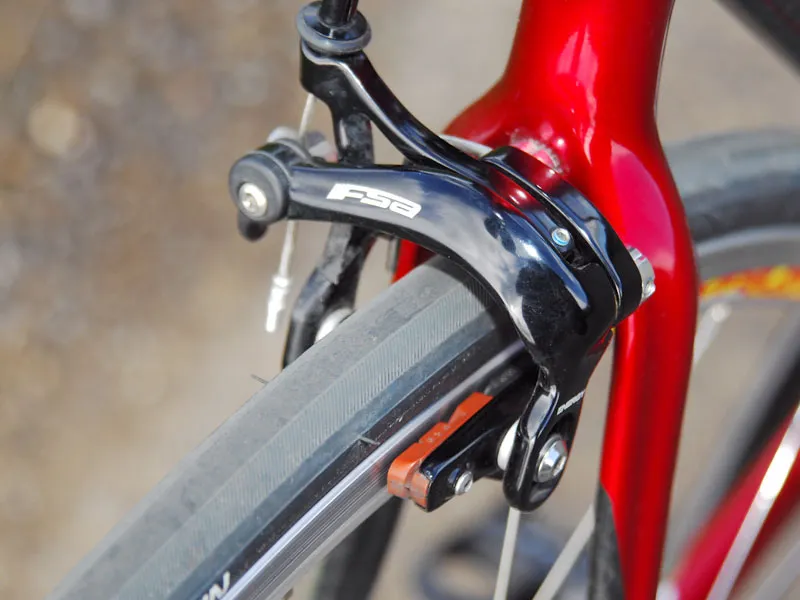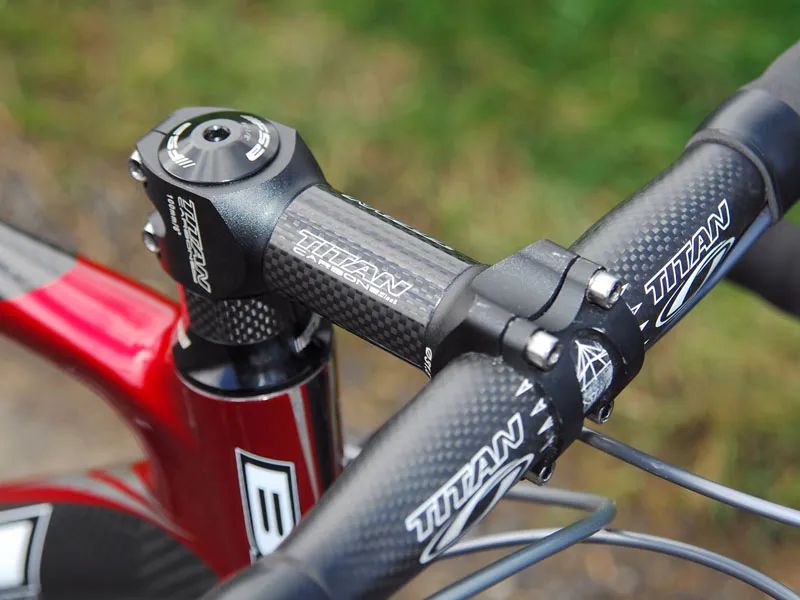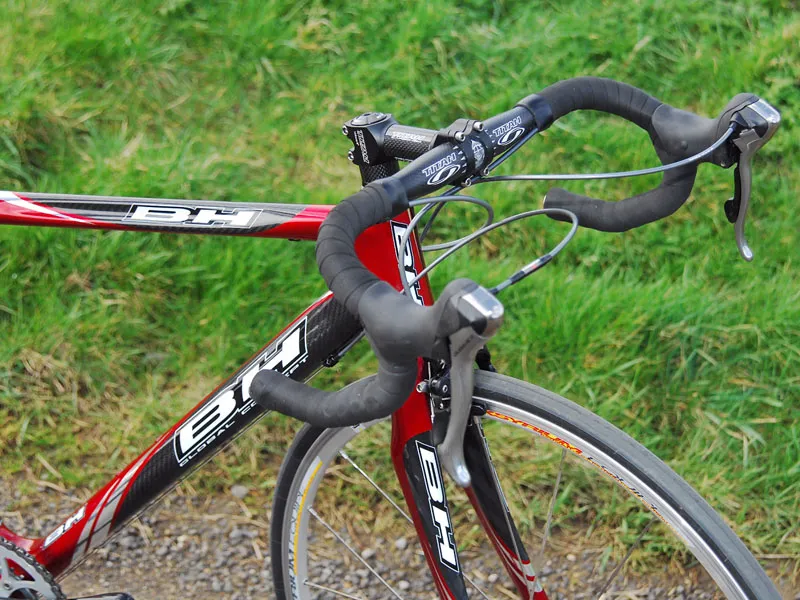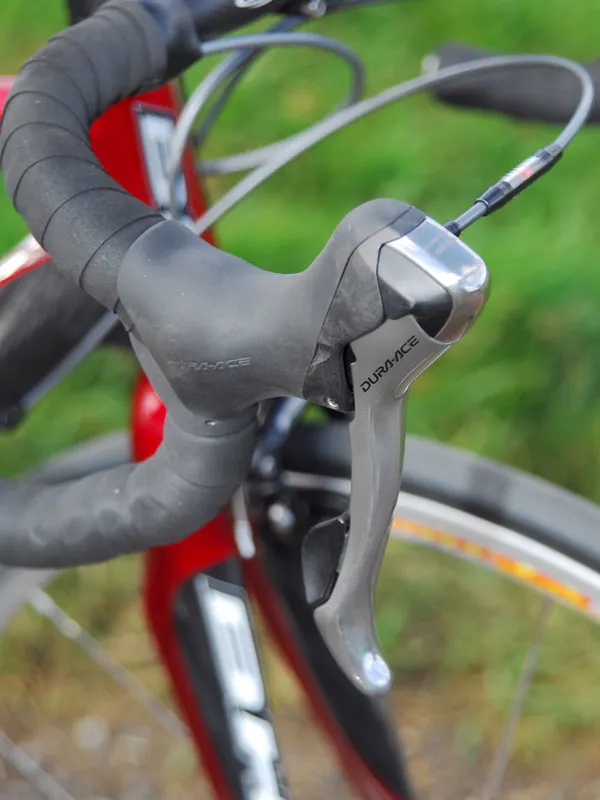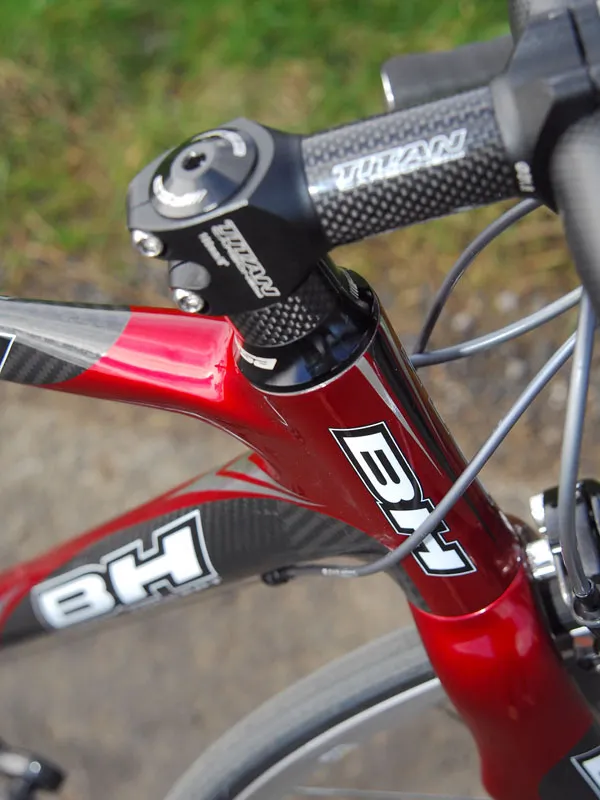Spanish outfit BH’s full-carbon rakish G-3 frame is an eye-catching piece of work with a pro race pedigree. It should be a winner, and yet…
The Global Concept G-3 frame design made its first appearance during BH’s sponsorship of the Liberty Seguros Team. BH now supply AG2R and while the machines ridden by the pros have moved on, BH continues to offer the original G-3. It's available in different incarnations featuring SRAM Force (L85D), Shiamno Dura-Ace (L83), or Campagnolo Chorus (L87D) at £2,899, or Shimano Ultegra (L81C) at £2,699.
Ride & handling: back to school
It only took a few brisk pedal strokes and a few attempts at changes of direction to bring out a serious lack of lateral rigidity in the front end of the bike. This had the unnerving effect of making the bike feel as if your wheels had slipped into a groove. Any attempt at changes of direction using the handlebars in a conventional way would just make the whole bike flap about, both at low and high speed.
First impressions aren’t always lasting impressions; sometimes you really need to live with a bike for a while to its true qualities to appear. That’s what I hoped with the BH Global Concept, so to give the bike a chance I swapped the aero bladed, all carbon fork (480g) with a stiffer Time fork.
There was an immediate and substantial improvement in handling, but it didn’t completely eradicate a bad case of “the flap”. The fork change eliminates the twisting motion of the original fork but the rear end of the bike still shimmies.
Further inspection and testing, piling on the miles over numerous rides, revealed the other factor contributing to the frame’s excessive lateral movement. The chain stays flex as they transition away from the bottom bracket area.
The result is a delayed response between the front and the back of the bike. To partially counteract this disconcerting trait I found I had to shift my weight further back over the rear wheel than normal, and steer almost entirely with my hips.
Not ideal when attacking downhills, wet off-camber turns, or tight and quick changes of direction.
The lack of lateral stiffness isn’t the BH’s only handling flaw. Braking can throw up some unpleasant surprises too.
The FSA Energy dual pivot brakes offer plenty of power, but the twin compound pads proved grabby near the end of the stroke. The sudden onslaught of stopping power, combined with the lower grip of the Michelin Lithion tyres, saw the back of the bike was trying to catch up with the front. Again not ideal, as another re-learning period was required to adjust to these characteristics.
The featherweight carbon Titan bar and bonded carbon stem also compromised the handling, especially when you put the power down or hit rough surfaces. I can see how they might work well on a stiff bike, but not here, where they just make things worse.
Although the inch or more of movement at the bar ends took the sting out of cobbles and potholes, it was very alarming during sprints and out of saddle efforts. This might be a step too far for burlier riders looking to throw their weight around in a sprint finish for the café stop.
The BH is at its most well-mannered when riding at measured, unhurried tempo, or longer climbing in the saddle at a high steady pace. It does what you would expect, no better, but then again no worse, than comparable machines.
Frame: “remember when…”
The Global Concept design is a high modulus carbon construction incorporating carbon nanotubes in a low slung monocoque frame.
While the nanotube technology is of the moment, as is the integrated seatpost, the frame layout harks back to a time when seat tubes were getting longer, and head tubes were getting shorter; when top tubes were sloping from back to front with increasing steepness, and handlebars were being mounted below head tubes rather than above them. A time when people were still nailing their T.A. Criterium cleats to the soles of their shoes: the Eighties.
Advances in wind tunnel testing and UCI regulations on frames and wheel size have been flattening out rider position for the better part of a decade now. This is reflected in the majority of contemporary designs. With the BH, (despite the semi-sloping top tube), the short, low head tube, longer than normal seat tube and shallow seat post extension are a throwback to the Eighties. Steeply pitched rider positions were all the rage, then, in particular with time trial bikes.
As it was laid out for us, the plunging position seemed more suitable to riders with a longer reach and flexible upper body. If you have a proportionately longer upper body it might work well for you. The position might also be popular with some old school time triallists.
Even so, it’s a good looking and well made frame, with eye-catching paint and graphics, and light at just a touch over 1,000g. A longer steerer tube for the fork would have made it easier to get a more comfortable position in the drops, given the quite short and low head tube. Make sure to allow for a generous amount of spacers when getting your bike fitted. Finally, a bespoke plug-in style short aero carbon seat post allows about 7 cm of height adjustment above the medium 65 cm full length aero seat tube.
Equipment: a buffet for all tastes
For the L83, BH calls on the expertise of several established and popular component brands, creating an interesting mix that’s in keeping with the stand-apart look of the bike. Amongst them is an FSA Team Issue crank, beautifully made out of carbon, with a separate forged and machined spider, and featuring compact 50/35 alloy rings.
Although the rigidity and shifting qualities were more than adequate, the 149mm Q-factor (the crank width across the pedal faces) proved problematic. Campagnolo and Shimano cranks measure about 144-5mm. Q-factor's not an issue for many riders, but for roadies, “more narrow is more better”. In my case the wider stance produced faint knee pain after about the half-hour point on every sortie. I was pedalling squares instead of circles, and a nice spin became a chore.
Left or right adjustments would require some lateral thinking on the part of a good mechanic, given the limitations on fine tuning of the two piece crank design. A swap for either Campagnolo or Shimano cranks might prove the better solution.
The FSA theme continues with the Energy dual pivot brakes.
An FSA front derailleur coupled with a Shimano Dura-Ace rear derailleur didn’t quite meet expected standards in their collaboration with the tried and true Dura-Ace STI brake/shift levers. Occasional vagueness and missed shifts were consequences of the rear derailleur cable routing being run inside the right chain stay. A lack of barrel adjusters at the front end made it impossible to perform critical on-the-fly adjustments.
A more decorative than comfortable San Marco SPide steel rail saddle with the right shape but the wrong padding made sure I didn’t fall asleep at the wheel.
Wheel package: tough and slick
Mavic is always a reliable and sure bet when it comes to wheels, and the tried and true Ksyrium Equipes don’t disappoint. They're robust and reliable due to their bladed spokes, sealed cartridge bearings and welded and machined rims. Because they're cheaper than Ksyrium Sls, BH is able to throw the Dura Ace levers and rear derailleur into the mix.
The BH L85D model with SRAM Force, or the L81C for £200 less, substitutes still very effective Ultegra STI levers and rear mech. Those bikes therefore get a wheel upgrade to the more advanced and lighter Ksyrium SL’s. Choices, choices…
Shod with Michelin Lithion tyres, the wheels proved to be durable and reassuring rather than svelte and enlightening. The tyres' rigid casing produced a firm feel to the ride, and the hard wearing compound, although good for low rolling resistance and very tough, was slippery when wet. This did not inspire confidence on the perpetually damp and greasy west-country roads, but I didn’t puncture, despite the mutilated hedges and sharp grit.
Verdict: an acquired taste
The BH L83 G3 is a bike that’s in search of an identity and a demographic, a show looking for an audience. Its handling quirks make it an acquired taste, and were downright scary initially. With size and power on the increase in every successive generation, I couldn’t recommend it if you were for example a typically big young Flemish amateur. Nor would I make it the workhorse in my racing stable. However, it's become a minor hit among time-trial riders, which is an endorsement of its low profile appearance and stance.
Its light weight and racy good looks means it's also suited to the lighter and gentler sportive rider who wants to dance over hills and mountains on an attractive and distinctive machine. But if you are accustomed to a sharper and more surefooted ride with sufficient levels of lateral rigidity, and if you want total obedience under a robust regime of high demands in handling and changes of pace, you will need to look elsewhere.
